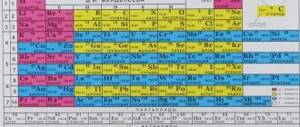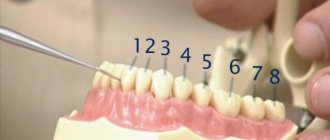Reflex principle of the nervous system
The tissue of the nervous system contains nerve cells and their processes. Cells of nervous tissue respond with excitation to irritation and can transmit it to cells of other tissues.
Nervous excitation (impulse) moves along a chain of the following structures:
- receptors - nerve endings in tissues that collect information about the state of the body;
- endings of motor nerves in tissues;
- nerves - processes of nerve cells through which nerve impulses are transmitted;
- nuclei - a group of nerve cells that process incoming impulses, analyze them and give orders to tissues.
The nervous system is able to instantly respond to any influence:
- information about any changes comes from the endings of the sensory nerves to the nuclei located in the brain;
- in the nuclei, the information received is analyzed and an order is sent to the tissues on how exactly to respond to the current situation;
- target cells (executors) immediately carry out the “instruction from above.”
Human nervous system
The human nervous system is a stimulator of the muscular system, which we discussed in the previous article. As we already know, muscles are needed to move body parts in space, and we have even studied specifically which muscles are intended for which work. But what powers the muscles? What and how makes them work? This will be discussed in this article, from which you will learn the necessary theoretical minimum for mastering the topic indicated in the title of the article.
First of all, it is worth informing that the nervous system is designed to transmit information and commands to our body. The main functions of the human nervous system are the perception of changes within the body and the space surrounding it, the interpretation of these changes and the response to them in the form of a certain form (including muscle contraction).
The nervous system is a set of different nervous structures interacting with each other, which, along with the endocrine system, provides coordinated regulation of the work of most of the body's systems, as well as a response to changing conditions of the external and internal environment. This system combines sensitization, motor activity and the correct functioning of systems such as endocrine, immune and more.
Types of the human nervous system
A person can move, talk, think, and engage in various types of work only due to the coordinated regulatory work of the subsections of the NS. The NS has several subsections, the work of which is closely interrelated. The following subsections are distinguished:
- central (CNS) – brain and spinal cord;
- peripheral (PNS) – nerve trunks and plexuses outside the central nervous system;
- vegetative (VNS) – regulation of the functioning of blood vessels, heart, lungs, liver, stomach, etc.; The ANS has two sections: the sympathetic (SNS), which is responsible for the functioning of the body in a state of stress, and the parasympathetic (PNS), which regulates the functioning of the body in a calm state.
Human central nervous system - structure and functions
The central nervous system is reliably protected by nature from injury and other influences, since its parts are located in bone cavities and covered with protective membranes. This coating is an insurmountable barrier to the entry of many toxins and infectious agents into the brain. The brain is immersed in cerebrospinal fluid (CSF). Liquor protects the brain from mechanical injuries, maintains constant pressure and metabolic processes in its tissue.
Centers located in the brain control complex forms of human activity. Conventionally, it is customary to divide the brain into a number of sections. These are the large, intermediate, hind, midbrain and medulla oblongata.
The large brain consists of two hemispheres and many subsections. Its right side is responsible for the functioning of the left half of the body, the left - the right. The hemispheres are divided into lobes:
- frontal - coordinates voluntary motor activity, speech motor skills, thinking processes and behavior characteristic of a rational being;
- temporal – regulates the sense of smell and hearing;
- parietal – touch and taste;
- occipital - supports the functioning of the visual organs.
The diencephalon has two divisions. The first of them is responsible for collecting information about the state of the body and transporting it to the cerebrum (thalamus). The second division (hypothalamus) is the main regulator of the functioning of the endocrine glands and their interaction with the central nervous system.
The hindbrain consists of the pons and cerebellum. These structures control the conduction of nervous stimulation, coordination of gait and any movements.
The midbrain (the quadrigeminal tubercles) is a group of nuclei that controls latent vision and a reflex that allows an instant turn of the body in the event of threatening danger.
In the medulla oblongata, the main substance is the processes of nerve cells with nuclei consisting of clusters of the cells themselves. The main function is to control the operation of such complex systems as the respiratory and cardiovascular systems, and the correct execution of complex movements.
The spinal cord regulates simpler reflex muscle movements and reflex work of the body, and carries the necessary information to the overlying sections.
Human peripheral nervous system - structure and functions
These are nerves and their plexuses that originate from the central nervous system. Each nerve is enclosed in a myelin sheath. Myelin protects the nerve from injury, provides its nutrition (capillaries pass through the walls of the sheath) and improves the conduction of nervous stimulation.
The nerve fibers that make up a nerve have different functions. Based on this feature, they are divided into two types:
- sensitive – transfer information from tissues to the brain;
- motor - carry commands sent by the brain to target organs.
The nerve may contain sensory, motor or mixed fibers. When mixed nerves are damaged, all its functions are affected.
The nervous system is a perfect mechanism that allows you to control both simple and complex forms of human activity.
CENTRAL NERVOUS SYSTEM
The central nervous system consists of the brain and spinal cord and their protective membranes. The outermost is the dura mater, under it is the arachnoid (arachnoid), and then the pia mater, fused with the surface of the brain. Between the pia mater and the arachnoid membrane is the subarachnoid space, which contains cerebrospinal fluid, in which both the brain and spinal cord literally float. The action of the buoyant force of the fluid leads to the fact that, for example, the adult brain, which has an average mass of 1500 g, actually weighs 50–100 g inside the skull. The meninges and cerebrospinal fluid also play the role of shock absorbers, softening all kinds of shocks and shocks that tests the body and which could lead to damage to the nervous system.
The central nervous system is made up of gray and white matter. Gray matter is composed of cell bodies, dendrites, and unmyelinated axons, organized into complexes that include countless synapses and serve as information processing centers for many functions of the nervous system. White matter consists of myelinated and unmyelinated axons that act as conductors transmitting impulses from one center to another. The gray and white matter also contains glial cells.
CNS neurons form many circuits that perform two main functions: they provide reflex activity, as well as complex information processing in higher brain centers. These higher centers, such as the visual cortex (visual cortex), receive incoming information, process it, and transmit a response signal along the axons.
The result of the activity of the nervous system is one or another activity, which is based on the contraction or relaxation of muscles or the secretion or cessation of secretion of glands. It is with the work of muscles and glands that any way of our self-expression is connected.
Incoming sensory information is processed through a sequence of centers connected by long axons that form specific pathways, for example pain, visual, auditory. Sensory (ascending) pathways go in an ascending direction to the centers of the brain. Motor (descending) tracts connect the brain with motor neurons of the cranial and spinal nerves.
The pathways are usually organized in such a way that information (for example, pain or tactile) from the right side of the body enters the left side of the brain and vice versa. This rule also applies to the descending motor pathways: the right half of the brain controls the movements of the left half of the body, and the left half controls the movements of the right. There are, however, a few exceptions to this general rule.
Functions of the nervous system
The nervous system has various effects on organs. The three main functions of the nervous system are:
- Triggering, causing or stopping the function of an organ (gland secretion, muscle contraction, etc.);
- Vasomotor, which allows you to change the width of the lumen of blood vessels, thereby regulating blood flow to the organ;
- Trophic, decreasing or increasing metabolism, and, consequently, the consumption of oxygen and nutrients. This allows you to constantly coordinate the functional state of the organ and its need for oxygen and nutrients. When impulses are sent along the motor fibers to the working skeletal muscle, causing its contraction, then at the same time impulses are received that enhance metabolism and dilate blood vessels, which makes it possible to perform energetic work.
Nervous system diseases
Together with the endocrine glands, the nervous system plays a decisive role in the functioning of the body. It is responsible for the coordinated functioning of all systems and organs of the human body and unites the spinal cord, brain and peripheral system. Motor activity and sensitivity of the body are supported by nerve endings. And thanks to the autonomic system, the cardiovascular system and other organs are inverted.
Therefore, dysfunction of the nervous system affects the functioning of all systems and organs.
All diseases of the nervous system can be divided into infectious, hereditary, vascular, traumatic and chronically progressive.
Hereditary diseases are genomic and chromosomal. The most famous and common chromosomal disease is Down syndrome. This disease is characterized by the following symptoms: disorders of the musculoskeletal system, endocrine system, lack of mental abilities.
Infectious diseases arise from exposure to bacteria, fungi and parasites. Diseases in this group include measles, encephalitis, malaria, etc. The main symptoms of these diseases are: impaired consciousness, headache, fever, vomiting, nausea.
Traumatic lesions of the nervous system occur due to bruises and injuries, or when the brain or spinal cord is compressed. Such diseases are usually accompanied by vomiting, nausea, memory loss, disturbances of consciousness, and loss of sensitivity.
Vascular diseases predominantly develop against the background of atherosclerosis or hypertension. This category includes chronic cerebrovascular insufficiency and cerebrovascular accident. Characterized by the following symptoms: attacks of vomiting and nausea, headache, impaired motor activity, decreased sensitivity.
Chronically progressive diseases, as a rule, develop due to metabolic disorders, exposure to infection, intoxication of the body, or due to abnormalities in the structure of the nervous system. Such diseases include sclerosis, myasthenia gravis, etc. These diseases usually gradually progress, reducing the performance of certain systems and organs.
Causes of diseases of the nervous system:
- Viruses (herpes, measles, mumps, chickenpox, HIV);
- Brain contusions;
- Vascular disorders;
- Parasites and fungi (toxoplasmosis, cryptococcosis, malaria);
- Brain tumors.
It is also possible to transmit placental diseases of the nervous system during pregnancy (cytomegalovirus, rubella), as well as through the peripheral system (poliomyelitis, rabies, herpes, meningoencephalitis).
In addition, the nervous system is negatively affected by endocrine, heart, kidney diseases, poor nutrition, chemicals and drugs, and heavy metals.
Human nervous system. Classification, organs and functions
The human body is a multi-stage structure, each organ and system of which is closely interconnected with each other and with the environment. And so that this connection is not interrupted even for a split second, a nervous system is provided - a complex network that permeates the entire human body and is responsible for self-regulation and the ability to adequately respond to external and internal stimuli. Thanks to the well-coordinated work of the nervous system, a person can adapt to the factors of the external world: any, even minor, change in the environment causes nerve cells to transmit hundreds of impulses at an incredibly high speed so that the body can instantly adapt to new conditions. Internal self-regulation works in a similar way, in which the activity of cells is coordinated in accordance with current needs.
The functions of the nervous system affect the most important processes of life, without which the normal existence of the body is unthinkable. These include:
- regulation of the work of internal organs in accordance with external and internal impulses;
- coordination of all units of the body, from the smallest cells to organ systems;
- harmonious interaction between humans and the environment;
- the basis of higher psychophysiological processes characteristic of humans.
How does this complex mechanism work? What cells, tissues and organs make up the human nervous system and what is each of its sections responsible for? A brief excursion into the basic anatomy and physiology of the human body will help you find answers to these questions.










